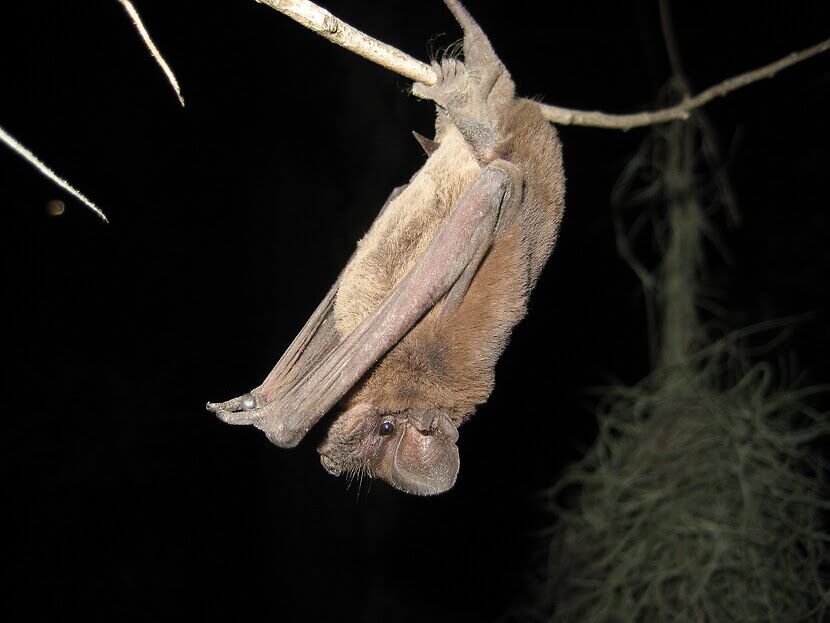Histoplasmosis
From Bats
Histoplasmosis is a deadly fungal disease that bats and birds can pass on to humans. Have you ever wondered if the disease is really dangerous, or how it can be prevented? Read on to learn more!
How Serious is the Threat of Histoplasmosis from Bats?
Histoplasma capsulatum is the name of a fungal disease spore that causes the disease Histoplasmosis. It’s probably not a disease that you’re overly familiar with, but if you’ve ever been in close proximity to bats, such as having bats flying around in your back garden, there is a chance that you have been exposed to the fungal spores yourself. Bats are not the only animal that is known for spreading around the spores, although they are one of the biggest offenders; birds are another on the hit list.

What is Histoplasmosis?
The disease itself is technically an infection of a lung or both lungs.
Acute Histoplasmosis
In adults who are otherwise fit and healthy, the fungal spores can enter the body, move around, attempt to do some damage, and then move along, all without anyone being any the wiser. This is classed as “short-term” Histoplasmosis, or “acute” Histoplasmosis and is said to have affected over sixty percent of people living in the same areas as infected bats. Those people won’t have even known their were exposed to the disease, or even that they were in the same environment as bats.
Chronic Histoplasmosis
The more serious side to this disease is “chronic” Histoplasmosis, which is where the disease enters the body and does considerably more damage than the short-term/acute version of it. Chronic Histoplasmosis can also materialize in cases when the less severe form of the condition was not diagnosed or treated correctly.
The fungus spreads to almost everywhere in the body when the chronic form of the condition happens, and is said to affect those with a compromised immune system the hardest, particularly those with HIV.

Symptoms of Histoplasmosis
In its earliest and acute form, the disease can come and go with no symptoms whatsoever. For other patients, however, the disease can stick around, causing flu-like symptoms that are vague and misleading. Often, when you feel generally under the weather for a few days, you would put it down to having a touch of the flu or a bad cold. It will only be after a few days or perhaps longer, when the condition doesn’t get better as it usually would, that you would seek medical attention.
Early symptoms can include:
- Headaches
- Muscle pains
- Joint pains
- Fever
- Chills
- Hot/cold sweats
- Sore throat
- Cough, particularly a dry dough
- A rash, often on the legs, made up like small, individual bumps
As you can probably imagine, these symptoms are also attributed to a wide variety of other diseases. If you do not know that you have bats living in your property (many homeowners are unaware for some time), you may have been exposed without even realizing it, and not be able to tell the doctor of the potential Histoplasmosis contamination. It is also generally considered the norm for the very first infection to be the worst case, when multiple infections are diagnosed over a period of time. If the same person were to get Histoplasmosis three times in the same year, the symptoms should, in theory, decrease in severity each time.
It is NOT possible for one person to give another person Histoplasmosis.
More serious symptoms can arise with acute Histoplasmosis, when treatment isn’t sought:
- Cough worsening
- Bleeding when coughing/bringing up blood
- Difficult breathing
- Wheezing sound when breathing
- Sweating more than usual
And then, again, further treatment avoidance can result in life-altering and even life-threatening symptoms that include:
- A very high temperature
- Severe headaches
- Neck and spine stiffness
- Swelling on the brain
- Swelling around the heart
- Heart palpitations
- Chest/heart pain
In very serious cases, when treatment has not been received, Histoplasmosis can be fatal.

How Do Bats Spread Histoplasmosis?
Bats and birds both spread the fungal disease spores responsible for the disease in their droppings. Contamination can happen in a number of ways. If fecal matter finds its way into water or water sources, that water can then be contaminated, causing the spores to be ingested. Food can be contaminated in the same way, as can soil.
Fungal disease spores can also be sent airborne when fecal matter has dried out. It then breaks down into a crumbly and dusty material, and if this is swept up, the spores are then free to be inhaled in the air around you.
You will be at risk of Histoplasmosis when you are in areas where bats and birds are found, and their droppings/biological material.

About Us
We are an educational site that provides information about the histoplasmosis disease that bats can pass on to humans, such as symptoms of the disease, different variations of histoplasmosis, prevention techniques, and much more.
